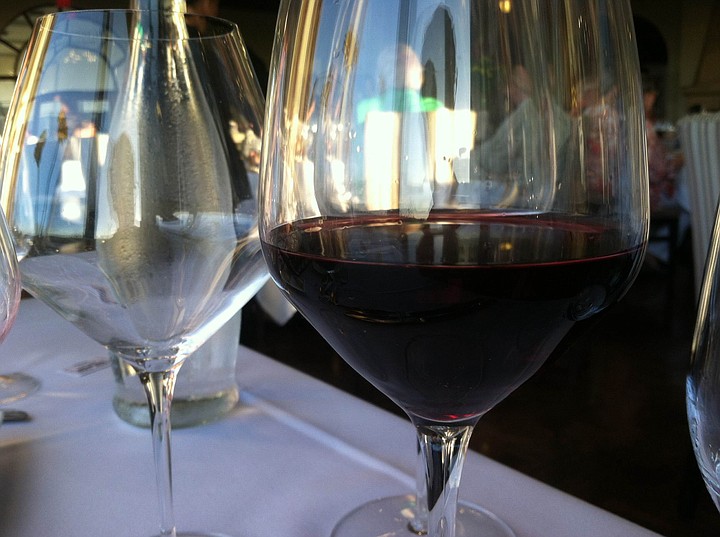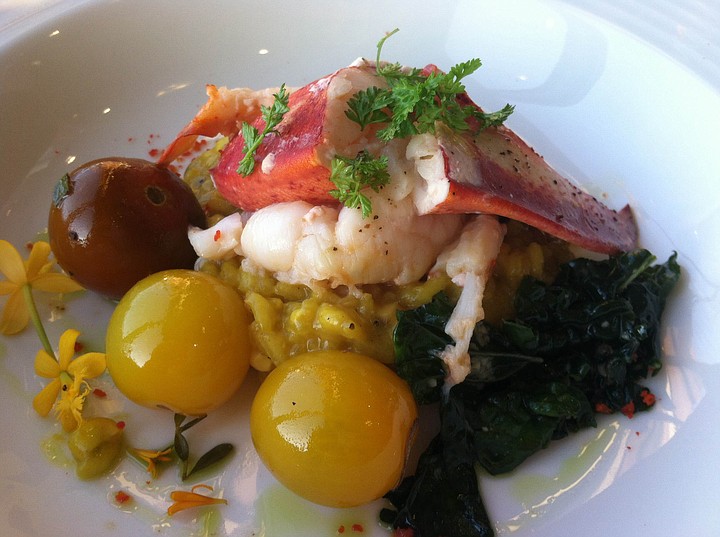 Facebook
Facebook
 X
X
 Instagram
Instagram
 TikTok
TikTok
 Youtube
Youtube

Down in the sunblasted “heel” of Italy, grapes with thick, black skins flourish in the baking sunlight. The wines produced from such crops are quintessentially Italian in their boldness and, if I might go out on a limb, represent the kind of wine we ought to be making in Southern California but too often don’t because winemakers think nobody will buy a wine that doesn’t say “Cabernet Sauvignon” or “Pinot Noir” on the label.
Sadly, they’re probably not wrong, but at least the attendees at last month’s Antinori wine dinner at La Gran Terraza (on the University of San Diego campus) got to delve into the oenological recesses of Southern Italy. Two of the Tormaresca wines from that event offer up a great case study for how familial, and different, these black grapes can be.
First, consider Torcicoda, Tormaresca’s funky, 100% Primitivo offering. This wine came through ten months in French and Hungarian oak barrels and eight more months in the bottles with a whiff of barnyard and cedar sawdust. It’s spicy, perhaps even a bit analgesic at the finish, and laced with the flavor of rich, dried plums.
La Gran Terraza paired the Torcicoda with a roasted fennel and tomato soup, which is good, but if you had a wine like this at home it would be a prime candidate for opening up before dinner with lots of ewe’s milk cheese.

As a foil, Tormaresca’s Morgicchio, which sounds like a supporting character from a Renaissance play, couldn’t look more similar yet drink more differently. While both wines sit dark as bull’s blood in the glass, Morgicchio’s a different beast. Negroamaro, an obscure grape grown almost exclusively in the area, lives up to its name, which is either “black and more black” or “black and bitter,” depending on whom you ask.
The wine doesn’t have much on the nose, but the intensity of blue fruits on the palate is shocking. Even more so, the distinct bitterness gives the wine an unexpected freshness. The bracing tannins, which I heard described with, “My tongue feels clean and I have the shivers,” work well, too.

The kitchen paired the Morgicchio with a lobster and saffron risotto, which is well-intentioned considering the Pugliese tradition of seafood risotti, but a better pick for a dish like this would be something like orecchiette with broccoli rabe and cured lardo, which one could easily make at home.
Wine n00bs, listen up. La Gran Terraza’s wine dinners are a good deal. The Antinori dinner has gone by, but there will be more. They serve generously and can expose some otherwise anonymous vintners to the light of amateur appreciation.


Down in the sunblasted “heel” of Italy, grapes with thick, black skins flourish in the baking sunlight. The wines produced from such crops are quintessentially Italian in their boldness and, if I might go out on a limb, represent the kind of wine we ought to be making in Southern California but too often don’t because winemakers think nobody will buy a wine that doesn’t say “Cabernet Sauvignon” or “Pinot Noir” on the label.
Sadly, they’re probably not wrong, but at least the attendees at last month’s Antinori wine dinner at La Gran Terraza (on the University of San Diego campus) got to delve into the oenological recesses of Southern Italy. Two of the Tormaresca wines from that event offer up a great case study for how familial, and different, these black grapes can be.
First, consider Torcicoda, Tormaresca’s funky, 100% Primitivo offering. This wine came through ten months in French and Hungarian oak barrels and eight more months in the bottles with a whiff of barnyard and cedar sawdust. It’s spicy, perhaps even a bit analgesic at the finish, and laced with the flavor of rich, dried plums.
La Gran Terraza paired the Torcicoda with a roasted fennel and tomato soup, which is good, but if you had a wine like this at home it would be a prime candidate for opening up before dinner with lots of ewe’s milk cheese.

As a foil, Tormaresca’s Morgicchio, which sounds like a supporting character from a Renaissance play, couldn’t look more similar yet drink more differently. While both wines sit dark as bull’s blood in the glass, Morgicchio’s a different beast. Negroamaro, an obscure grape grown almost exclusively in the area, lives up to its name, which is either “black and more black” or “black and bitter,” depending on whom you ask.
The wine doesn’t have much on the nose, but the intensity of blue fruits on the palate is shocking. Even more so, the distinct bitterness gives the wine an unexpected freshness. The bracing tannins, which I heard described with, “My tongue feels clean and I have the shivers,” work well, too.

The kitchen paired the Morgicchio with a lobster and saffron risotto, which is well-intentioned considering the Pugliese tradition of seafood risotti, but a better pick for a dish like this would be something like orecchiette with broccoli rabe and cured lardo, which one could easily make at home.
Wine n00bs, listen up. La Gran Terraza’s wine dinners are a good deal. The Antinori dinner has gone by, but there will be more. They serve generously and can expose some otherwise anonymous vintners to the light of amateur appreciation.
Comments